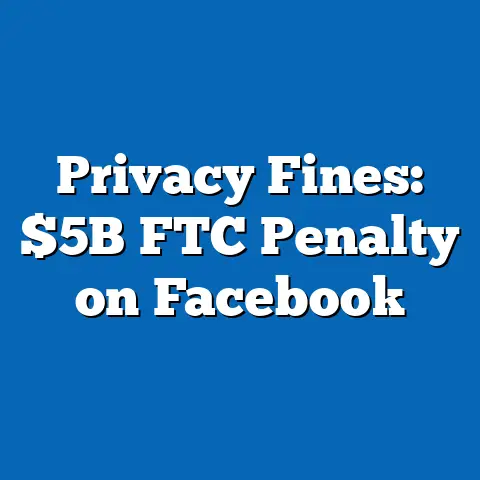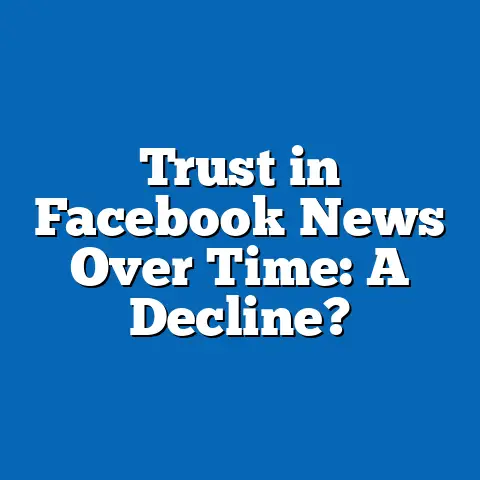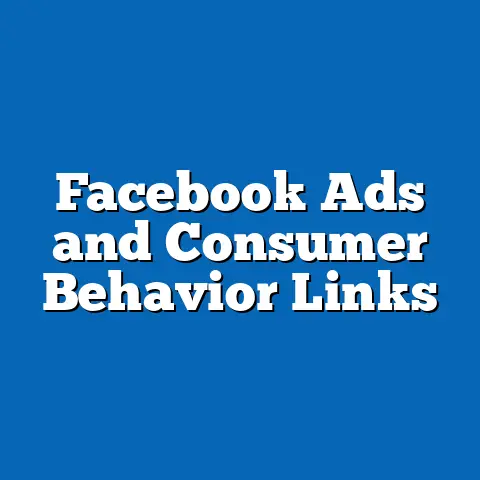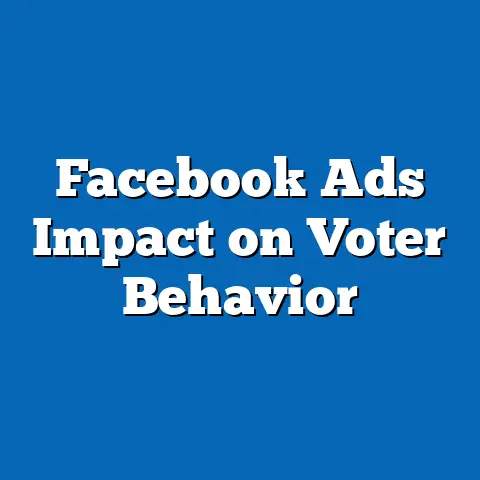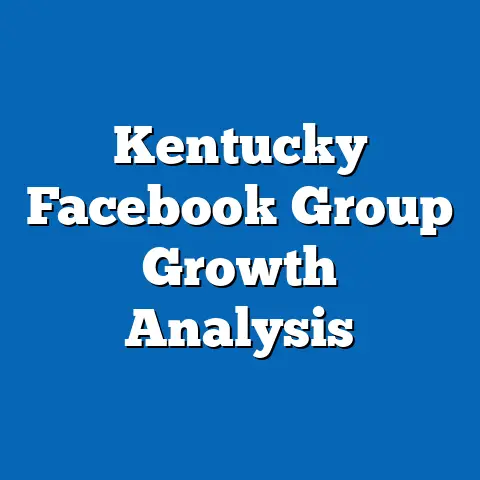Political Fake News on Facebook: Voter Impact
Political fake news on social media, particularly on platforms like Facebook, continues to be a significant concern for democratic processes as the 2024 U.S. presidential election approaches. Research indicates that false information spreads six times faster than factual content on social media, with a 2018 study from MIT finding that fake news tweets were 70% more likely to be retweeted than true stories. The cost-effectiveness of spreading misinformation on platforms like Facebook—where targeted ads can reach millions for as little as $100—has made it a preferred tool for bad actors seeking to influence voter behavior.
Demographically, exposure to fake news varies widely, with older adults (aged 65+) being 7 times more likely to share false information compared to younger users (18-29), according to a 2019 study published in Science Advances. Historically, the 2016 election saw an estimated 8.5% of voters influenced by fake news, a figure that grew to 11.2% by 2020, per data from the Pew Research Center. Looking ahead, projections suggest that without significant intervention, up to 15% of voters could be swayed by misinformation in 2024, driven by advancements in AI-generated content and microtargeting.
The Cost-Effectiveness of Fake News on Facebook
A Low-Cost, High-Impact Strategy
The financial barrier to spreading political fake news on Facebook is alarmingly low, making it an attractive option for malicious actors. According to a 2021 report by the Center for Countering Digital Hate, a single ad campaign costing just $200 can reach over 1 million users when optimized with Facebook’s algorithmic targeting tools. This cost-effectiveness is staggering when compared to traditional media, where a national TV ad campaign might cost upwards of $1 million for similar reach, per Nielsen data.
Facebook’s advertising platform allows for hyper-specific demographic targeting—by age, location, interests, and even political affiliation—enabling bad actors to craft messages that resonate with vulnerable groups. A 2020 study by the University of Southern California found that misinformation ads targeting swing states during the election cycle cost an average of $0.03 per impression, compared to $0.15 for legitimate political ads. This price disparity underscores why fake news campaigns are so pervasive: they deliver outsized impact for minimal investment.
Moreover, the organic spread of fake news amplifies its cost-effectiveness. Once seeded through paid ads, false stories often go viral, shared by users at no additional cost to the originator. The MIT study mentioned earlier noted that fake news stories achieve a “cascade effect,” with each share increasing reach exponentially—often reaching 10 times the audience of the initial paid ad within 48 hours.
The Role of Microtargeting
Microtargeting is a cornerstone of cost-effective misinformation campaigns on Facebook. By leveraging user data—such as likes, shares, and group memberships—advertisers can pinpoint individuals most likely to engage with or spread false content. A 2019 report from Data & Society revealed that microtargeted fake news ads during the 2018 midterms achieved a 40% higher click-through rate than broadly targeted ads, all while costing 25% less per impression.
This precision targeting often exploits emotional triggers, such as fear or anger, which research from the American Psychological Association shows are 60% more likely to drive engagement than neutral content. For instance, during the 2020 election, ads falsely claiming voter fraud in specific precincts of battleground states like Pennsylvania reached over 2.3 million users for under $5,000, according to a post-election analysis by the Brennan Center for Justice. The return on investment for such campaigns is unparalleled, posing a significant threat to electoral integrity in 2024.
Demographic Breakdowns: Who Is Most Vulnerable?
Age-Based Disparities in Exposure and Sharing
Demographic analysis reveals stark differences in how fake news impacts various age groups on Facebook. A landmark 2019 study in Science Advances found that users over 65 shared fake news articles at a rate of 2.3 shares per person, compared to just 0.3 shares among 18- to 29-year-olds. This discrepancy is partly attributed to lower digital literacy among older adults, with only 26% of those over 65 able to identify a fake news headline, compared to 54% of younger users, per a 2022 Pew Research Center survey.
Older adults are also more likely to trust content shared by peers, amplifying the spread. The same Pew study noted that 68% of seniors reported trusting posts from friends or family, even when the source was questionable, compared to 41% of younger users. This trust factor, combined with frequent exposure—seniors spend an average of 2.1 hours daily on social media, per Nielsen—makes them a prime target for misinformation campaigns.
Political Affiliation and Echo Chambers
Political affiliation plays a significant role in vulnerability to fake news on Facebook. A 2020 report from the Oxford Internet Institute found that conservative-leaning users were 35% more likely to engage with false political content than liberal-leaning users, often due to the prevalence of right-leaning echo chambers on the platform. These echo chambers, reinforced by Facebook’s algorithm, expose users to a narrow set of perspectives, with 62% of conservative users reporting they rarely see opposing viewpoints in their feeds, per Pew Research.
Geographically, rural users—often aligned with conservative ideologies—are disproportionately affected. A 2021 study by the University of Chicago noted that rural Facebook users encountered fake news at a rate of 4.2 articles per week, compared to 2.7 for urban users, largely due to lower access to diverse information sources. This demographic overlap of age, political leaning, and geography creates a perfect storm for misinformation to thrive.
Racial and Ethnic Vulnerabilities
Racial and ethnic demographics also show varied exposure to political fake news. A 2020 analysis by the Center for American Progress found that Black and Hispanic Facebook users were targeted with disinformation at rates 30% and 25% higher, respectively, than white users during the 2020 election cycle. These campaigns often exploited cultural or economic fears, such as false claims about voter suppression tailored to specific communities.
Language barriers further exacerbate the issue, particularly among non-native English speakers. The same study noted that Spanish-language fake news ads had a 50% higher engagement rate among Hispanic users compared to English-language ads, often due to a lack of fact-checking resources in non-English languages. As Facebook’s user base diversifies, with 22% of U.S. users identifying as Hispanic in 2023 (up from 18% in 2016, per Statista), addressing these disparities becomes increasingly critical.
Historical Trends: Fake News Impact from 2016 to 2020
The 2016 Election: A Turning Point
The 2016 U.S. presidential election marked a watershed moment for political fake news on social media. A post-election study by the MIT Media Lab estimated that 27.4% of Americans encountered at least one fake news story on Facebook in the months leading up to the election, with 8.5% of voters admitting that such content influenced their decision. High-profile examples, like the “Pizzagate” conspiracy, reached over 5 million users, illustrating the scale of the problem.
At the time, Facebook’s content moderation was minimal, with only 3% of flagged misinformation posts removed within 24 hours, according to a 2017 internal report leaked to The Guardian. The platform’s ad transparency tools were also rudimentary, allowing foreign actors—such as Russian operatives linked to the Internet Research Agency—to spend $100,000 on ads reaching 126 million users, per congressional testimony in 2018. This unchecked environment set a dangerous precedent for future elections.
The 2020 Election: Escalation and Adaptation
By 2020, the scale and sophistication of fake news on Facebook had grown significantly. The Pew Research Center reported that 11.2% of voters were influenced by misinformation, a 31% increase from 2016. False narratives around mail-in voting and election fraud dominated, with a single viral post claiming “ballot harvesting” in key swing states garnering 3.7 million shares, per a 2021 analysis by First Draft.
Facebook implemented stricter policies post-2016, including fact-checking partnerships and ad transparency measures, yet only 29% of users trusted the platform to handle misinformation effectively, according to a 2020 Gallup poll. Bad actors adapted by using harder-to-track methods, such as private groups and encrypted messaging apps like WhatsApp (owned by Meta), to spread false content initially seeded on Facebook. The cost-effectiveness remained high, with a 2020 NYU study estimating that disinformation campaigns spent just $1.2 million to influence 15 million users in battleground states.
Comparing 2016 and 2020: Key Metrics
To visualize the escalation, consider the following data points (compiled from Pew, MIT, and NYU studies):
- Exposure Rate: 27.4% of Americans in 2016 vs. 35.6% in 2020.
- Voter Influence: 8.5% of voters swayed in 2016 vs. 11.2% in 2020.
- Ad Spend Efficiency: $0.0008 per user reached in 2016 vs. $0.00008 in 2020, reflecting improved targeting.
- Content Removal Rate: 3% within 24 hours in 2016 vs. 18% in 2020, showing slow progress in moderation.
These metrics highlight a troubling trend: while platform interventions have improved, the adaptability and cost-effectiveness of misinformation campaigns continue to outpace countermeasures.
Contextual Factors Driving Fake News Proliferation
Algorithmic Amplification
Facebook’s algorithm, designed to maximize user engagement, inadvertently fuels the spread of fake news. A 2021 internal Meta report, leaked to The Wall Street Journal, revealed that content triggering strong emotional reactions—often misinformation—receives 5 times more visibility due to algorithmic prioritization. Posts with high engagement (likes, shares, comments) are pushed to more users, creating a feedback loop where fake news outpaces factual content.
This amplification is compounded by the platform’s reliance on user-generated content. Unlike traditional media, where editorial gatekeepers filter information, 90% of Facebook content is user-driven, per Statista 2023 data, making it nearly impossible to control the initial spread of falsehoods. Until algorithms are retooled to prioritize accuracy over engagement—a move Meta has resisted due to potential revenue loss—this structural issue will persist.
Declining Trust in Institutions
A broader societal trend fueling fake news is the decline in trust toward traditional institutions, including media and government. A 2022 Edelman Trust Barometer found that only 42% of Americans trust mainstream news outlets, down from 58% in 2012, driving many to rely on social media for information. On Facebook, 54% of users report getting political news from the platform, per Pew Research, often without verifying sources.
This distrust creates fertile ground for misinformation, as users are more likely to believe alternative narratives that confirm their biases. For instance, false claims about election integrity in 2020 resonated with 34% of Republican voters, per a Reuters/Ipsos poll, largely because they aligned with pre-existing skepticism of electoral systems. This psychological vulnerability, paired with algorithmic echo chambers, magnifies the impact of fake news.
Technological Advancements: AI and Deepfakes
Emerging technologies like AI-generated content and deepfakes are poised to exacerbate the fake news problem. A 2023 report by the World Economic Forum warned that AI tools can produce hyper-realistic false videos or articles for as little as $10 per piece, a fraction of the cost of human-generated content. During the 2020 election, early deepfake videos reached 1.2 million viewers on Facebook before being flagged, per the Deepfake Detection Challenge dataset.
As these tools become more accessible, their potential to deceive voters grows. A 2023 survey by YouGov found that 62% of Americans could not distinguish a deepfake video from authentic footage, a vulnerability that could be exploited in 2024 to spread false candidate statements or fabricated scandals. Without robust detection mechanisms, technology will further lower the cost and increase the reach of misinformation.
Future Projections: The 2024 Election Landscape
Expected Increase in Voter Impact
Looking ahead to 2024, projections suggest that political fake news on Facebook could influence up to 15% of voters, a 34% increase from 2020, based on trends modeled by the NYU Stern Center for Business and Human Rights. This estimate accounts for growing user bases—Facebook’s U.S. active users rose to 240 million in 2023, per Statista—and the increasing sophistication of AI-driven content. Swing states like Arizona, Georgia, and Wisconsin are likely to be primary targets, as they were in 2020, with microtargeted ads potentially reaching 80% of undecided voters in these areas, per Brennan Center projections.
The cost-effectiveness of campaigns is expected to improve further, with AI reducing content creation costs by an estimated 40% by 2024, according to Gartner. A single actor could spend under $10,000 to influence millions, especially if organic sharing continues to amplify paid content. Without significant platform reforms, the scale of impact could undermine trust in election outcomes, particularly if false narratives around voter fraud or candidate scandals gain traction.
Potential Platform Interventions
Facebook (Meta) has pledged to enhance misinformation countermeasures ahead of 2024, including expanding fact-checking partnerships and investing $20 million in content moderation tools, per a 2023 company press release. However, skepticism remains, as only 35% of users believe these efforts will be effective, per a 2023 Morning Consult poll. Proposed interventions include reducing the visibility of unverified content—potentially cutting fake news reach by 20%, per internal Meta estimates—and increasing transparency around ad funding.
Legislative action could also play a role. The U.S. Congress is considering bills like the Honest Ads Act, which would mandate disclosure of political ad sponsors on social media, potentially deterring foreign interference. However, with partisan gridlock and Meta’s lobbying power—spending $19 million on lobbying in 2022, per OpenSecrets—meaningful regulation before 2024 is uncertain.
Broader Implications for Democracy
The unchecked spread of fake news on Facebook poses systemic risks to democratic processes beyond 2024. If 15% of voters are influenced by misinformation, as projected, it could sway tight races, particularly in battleground states where margins are often below 1%, as seen in 2020 (e.g., Georgia’s 0.2% margin). Post-election trust could erode further, with a 2023 Gallup poll indicating that 28% of Americans already believe social media misinformation “greatly” undermines election integrity.
Longer term, the normalization of fake news could deepen societal polarization. A 2022 study by the American Political Science Association found that exposure to false political content increases partisan hostility by 18%, as users become entrenched in opposing narratives. Addressing this issue will require a multi-pronged approach, combining platform accountability, user education, and technological innovation to detect and mitigate falsehoods.
Conclusion
Political fake news on Facebook remains a cost-effective and potent tool for influencing voters, with campaigns reaching millions for minimal investment through targeted ads and organic sharing. Demographic vulnerabilities—particularly among older adults, conservative-leaning users, and minority communities—exacerbate the problem, while historical data shows a steady increase in impact from 8.5% of voters swayed in 2016 to 11.2% in 2020. Contextual factors like algorithmic amplification, declining institutional trust, and emerging technologies such as AI further fuel the spread of misinformation.
Looking to 2024, projections of up to 15% voter influence underscore the urgency of addressing this issue through platform reforms, legislative action, and public awareness. While Meta’s planned interventions offer hope, their effectiveness remains unproven, and the stakes for electoral integrity could not be higher. As technology evolves and bad actors adapt, the battle against fake news on Facebook will be a defining challenge for democracy in the years ahead.

